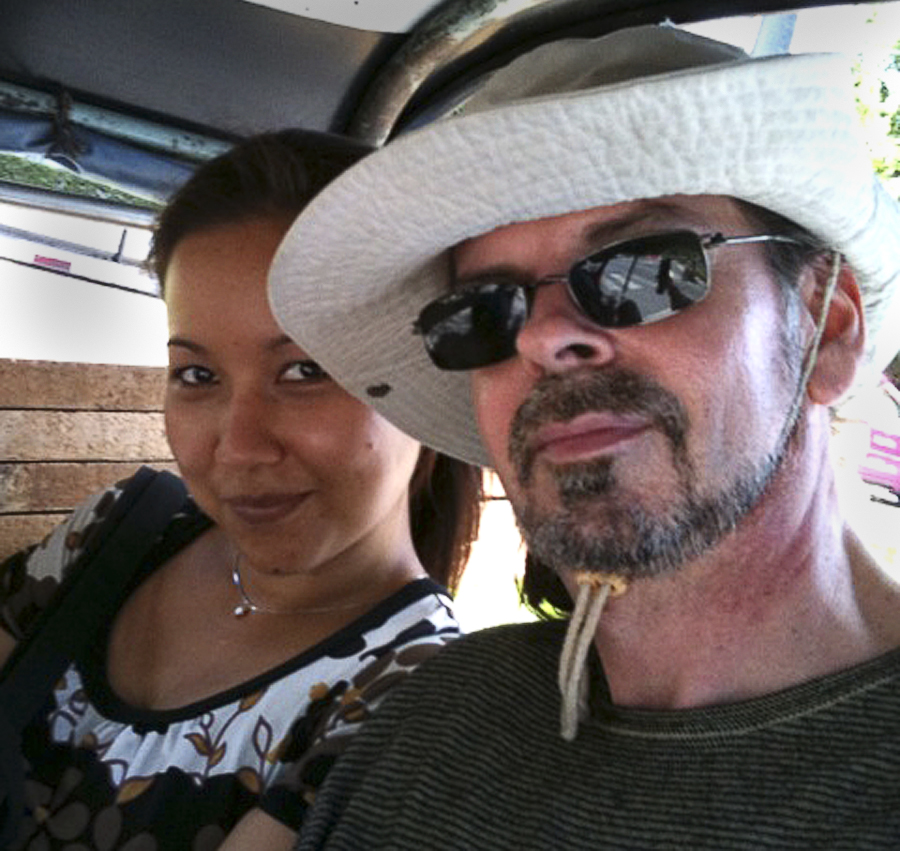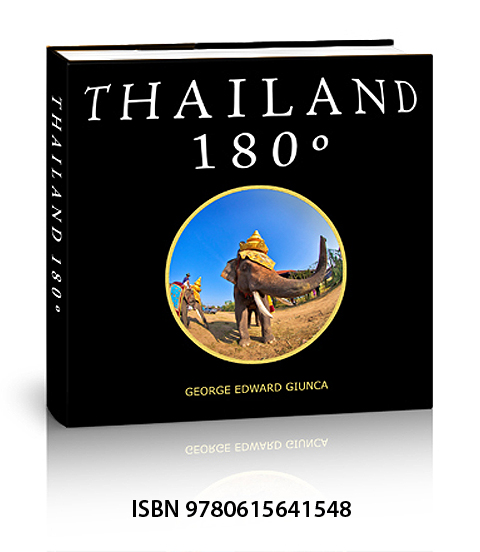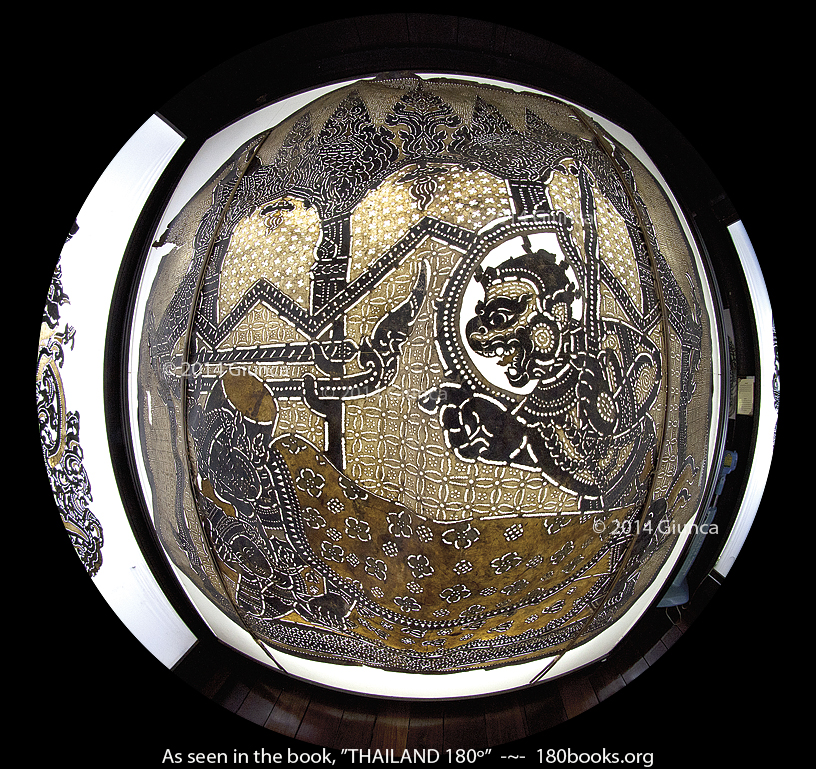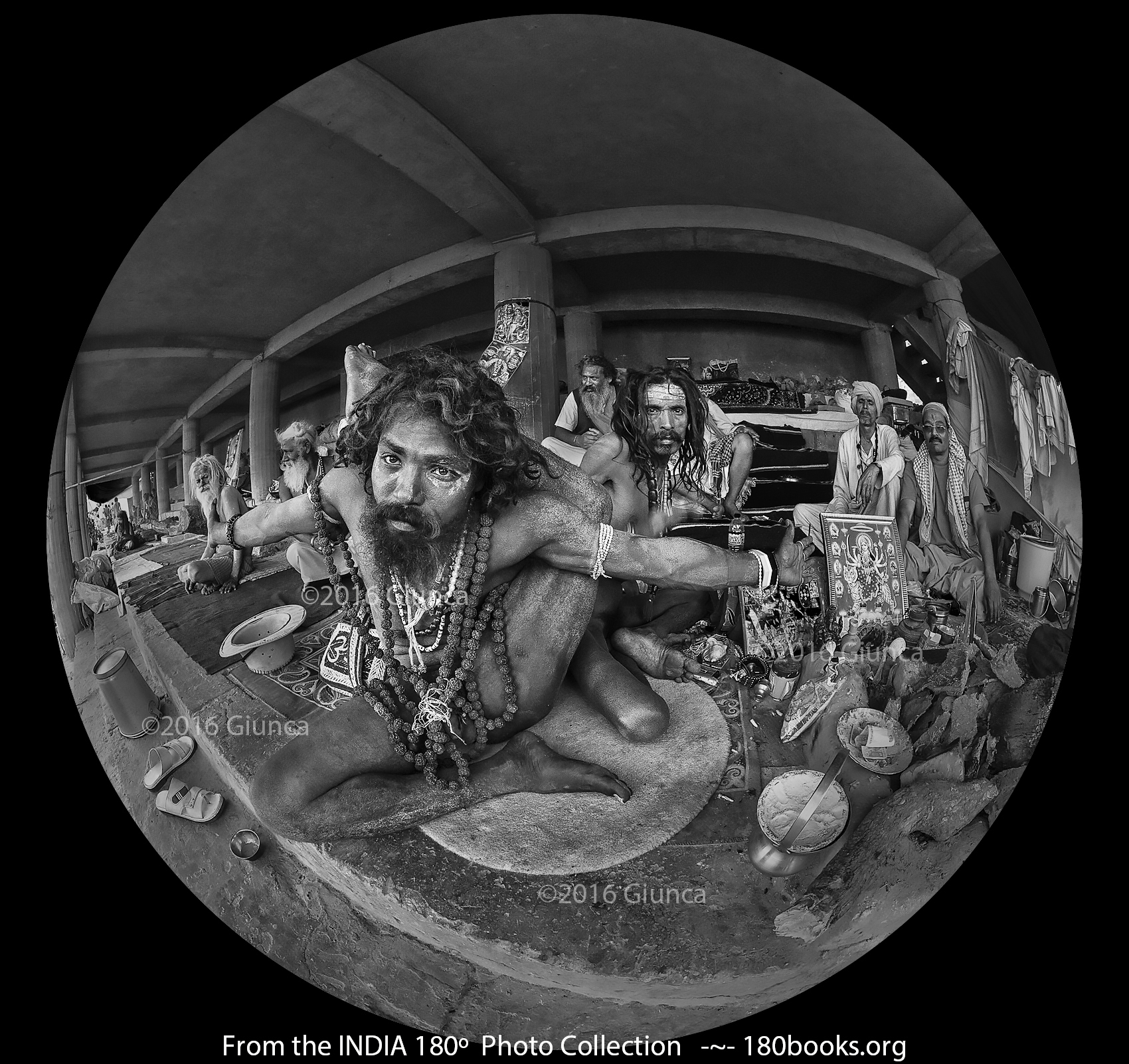Season of the King & Queen of Fruit in Thailand
Season of the King & Queen of Fruit in THAILAND 180º: ฤดูแห่งราชาและราชินีผลไม้ไทย
Some of the tastiest tropical fruit are starting to appear in the markets, which means that the season is almost upon us. Many of these fruits are available worldwide now, in a can or maybe fresh in Asian markets of large cities. This blog is about the fruit that was shown in our THAILAND 180º book.
Between the months of May and June is the peak of the tropical fruit season of Thailand! There are even fruits called the King and the Queen of fruit as well. Durian, mangosteen, rambutan, salacca, santol, to name a few of my favorites, are parading out to the markets BUT if you are lucky enough to live in Bangkok, Pattaya or Chonburi, we suggest you head to the orchards in the East. Chonburi, Rayong, Chanthaburi, and Trat have many fruit orchards that are open now for visitors to gorge at an all you can eat fruit buffet! There are also orchards that allow you to pick and charge you by the weight of the fruit. I enjoy this, except for the nasty red ants that find my hand more irresistible than the fruit.
ช่วงปลายเดือนพฤษภาคม-มิถุนายน นี้น่าตื่นเต้นมากมายเพราะเป็นฤดูแห่งผลไม้ยอดนิยมของทั้งชาวไทยและชาวต่างชาติ เช่น ทุเรียน, เงาะ, มังคุด, สละ, กระท้อน ต่างทะยอยออกสู่ตลาดทั้งในประเทศและส่งออกไปขายทั่วโลก …หรือใครจะไปชิมถึงสวนก็ตรงดิ่งไปชลบุรี, ระยอง, จันทบุรี และตราด ทานผลไม้จ่ายราคาบุฟเฟ่ต์ ทานกันให้พุงกาง จะนั่งทาน นอนทาน ปูเสื่อ หรือ นั่งโต๊ะ ทานกันจนพุงปลิ้น-กางเกงปริไปเลย สนับสนุนการท่องเที่ยวภาคตะวันออกของไทยเราให้คึกคักมากขึ้น …สัปดาห์นี้นำภาพผลไม้จากหนังสือ THAILAND 180º มาให้ชมกันค่ะ

The King of Fruit ~ Durian : ทุเรียน ราชาแห่งผลไม้ (Image from the 180books.org Photo Collection by George Edward Giunca)
The King of Fruit ~ Durian : ทุเรียน ราชาแห่งผลไม้
Durian, AKA, King of Asian Fruits, inspires different reactions from different people. While I agree that the odor is a bit strong, the creamy, custard-like pale yellow fruit inside the thorny shell tastes sublime. Many Thais, like my wife, say the smell makes them feel nauseous, and avoid lingering in the produce section of the grocery stores. If you’re traveling in the Kingdom, be sure to try this fruit. The Thais have a belief that this fruit should not be consumed with beer, or something terrible will happen. Based on my experience, it ain’t so!
กลิ่นแตะจมูก(*⌒ヮ⌒*)ราชาแห่งผลไม้นี่เอง!
“ทุเรียน” เป็นผลไม้ที่หลายคนโปรดปราน หลายคนตกหลุมรักแรกชิม แต่อีกหลายคนไม่ชอบเพราะกลิ่นแรง —ฝนก็ไม่ชอบอ่ะ!! …พอไปถึงสวนผลไม้ระยอง โดนคุณเอ็ดเวิร์ดบังคับให้ชิมหมอนทอง กับ ก้านยาว เอิ่ม..ก็แบบว่า ถามเจ้าของสวน “มีอีกมั้ยคะ? อร่อยดี แหะๆ!!”
.. เขาว่ากันว่า “ไม่ให้ทานทุเรียนและดื่มแอลกอฮอล์ในขณะเดียวกันหรือในระยะเวลาใกล้เคียงกัน” อันนี้จริงหรือไม่ คุณเอ็ดเวิร์ดตอบว่า “ลองมาแล้ว ก็ไม่เห็นเป็นอะไรนะ!” อืม ก็แล้วแต่คนเนอะ!
Rambutan : เงาะ
Rambutan comes in red and yellow and has soft spines that are either red or green and give the fruit a porcupine-like look. In fact, the fruit gets its name from the Malay word rambut, which means hairs. Native to Indonesian, it can also be found in Thailand, Myanmar, Sri Lanka and India; northwards to Vietnam, and the Philippines. It is relatively small, usually 3-6 cm, but sometimes reaches the size of 8 cm. If you see a rambutan this size, please contact me, at once!
ขนสั้น, ขนยาว, ขนเขียว, ขนชมพู … มีขนเพื่อกันหนาว?!
ไม่ใช่ค่ะ! .. “เงาะ” มีขนเพื่อความอยู่รอดในระบบนิเวศน์ พวกนกและสัตว์ต่างๆ จะได้ทานยากขึ้นมาอีกหน่อยและไม่สูญพันธุ์เร็ว เงาะมีถิ่นกำเนิดในประเทศอินโดนีเซียและมาเลเซีย แต่ก็พบว่าปลูกได้ดีทั้งในเมียนมาร์ ศรีลังกา อินเดีย เวียดนาม ฟิลิปปินส์ และไทย ปกติผลจะมีขนาด 3 – 6 เซนติเมตร แต่บางพันธุ์มีขนาดใหญ่มากถึง 8 เซนติเมตร ใครเจอผลใหญ่ขนาดนี้มาบอกด้วยนะ อยากชมและชิมเหมือนกันค่ะ มันจะอร่อยเหมือนเงาะโรงเรียนและเงาะสีชมพูบ้านเรามั้ยนะ

Cotton Fruit ~ Santol : กระท้อน (Image from the 180books.org Photo Collection by George Edward Giunca)
Cotton Fruit ~ Santol : กระท้อน
`Talk about farm fresh! Now we’d like to introduce you to a tasty and very useful fruit called ‘Santol.’ I should mention that santol is one of many fruits that can’t pick and eat right away. Just set it aside for a few days, and it will grow sweeter. Santol arrives in the market just as durian, mangosteen, and rambutans are almost gone which sadly happens around July.
Santol or Cotton fruit, Thais call “Kraton กระท้อน,” is a tropical fruit native to Indochina; Philippines, Indonesia, Malaysia, Thailand, Myanmar, Laos, and also in India. There are two varieties of santol, and different varieties have different ratios of sour to sweet.
In Thailand, santol is used in various dishes such as Gang Hunglay, gang kua a Thai curry with pork or prawn, and som tam. Desserts include ice with santol in syrup (Kraton Loy Kaew), Kraton Song Kreung, pickled santol, marmalade, and candied with sugar. It’s also popular to eat the ripened fruit for its antioxidant properties.
กระท้อน เป็นผลไม้แถบอินโดจีน ฟิลิปปินส์ อินโดนีเซีย มาเลเซีย ไทย พม่า กัมพูชา ลาว และ อินเดีย พันธุ์ที่ได้รับความนิยมสูงสูดเป็นพันธุ์กระท้อนห่อที่มีรสหวาน ส่วนพันธุ์พื้นเมืองจะมีผลดกแต่ขนาดเล็กและเปรี้ยว จึงนิยมนำมาทำเป็นกระท้อนดองและกระท้อนทรงเครื่อง
ปกติกระท้อนจะออกตามหลังทุเรียน, มังคุด, เงาะ คือประมาณปลายมิถุนายน-กรกฎาคม … มาเที่ยวสวนผลไม้ จะมาเด็ดกระท้อนจากต้นแล้วแกะทานเลยไม่ได้นะคะ!! ต้องทิ้งไว้ 2-3 วันให้ลืมต้นก่อนนะ
นอกจากจะรับประทานเป็นผลไม้สดแล้ว กระท้อนยังใช้ทำอาหารคาวหวานได้หลายชนิด เช่น แกงฮังเล, แกงคั่ว, ตำกระท้อน ส่วนอาหารหวาน เช่น กระท้อนทรงเครื่อง, กระท้อนลอยแก้ว, กระท้อนดอง, แยม, กระท้อนกวน และเยลลี่

Salacca ~ Snakefruit : สละ ระกำ (Image from the 180books.org Photo Collection by George Edward Giunca)
Salacca ~ Snakefruit : สละ ระกำ
Salacca is a genus of about 20 species of palms native to Southeast Asia and the eastern Himalayas. The two species in Thailand that look alike like twin which we can’t pick the one called “Salak” (Thai pronounce as Sa-lah สละ). The fruit grows in clusters at the base of on very short-stemmed palm trees, with leaves up to 6–8 m long. It has a reddish-brown scaly skin covering an off-white pulp and one to two large inedible seeds. Sometimes salacca is called “Snakefruit” because of its scaly snake-like skin. It is also covered with it has fine thorns that can make dealing with them unpleasant. Putting a few in a basket and shaking them will remove most of this nastiness. Fon’s mom advised us to pick the fruit that is long, thin, and pointy on top and bottom. When you peel it, you will see one to two large inedible seeds, The other shape called “Rakam ระกำ” is fatter and has more seeds but it’s acidic and less fragrant.
Btw, Fon’s mom makes an excellent Thai duck curry, Gaeng Phed Ped Yang, with the salak. We try to visit Bangkok at least once during this season to enjoy this dish.
สองพี่น้องฝาแฝดตระกูลปาล์ม ทำเอาคนซื้ออย่างเราแยกแทบไม่ออกเลยค่ะ อันไหนสละ และอันไหนระกำ งงฮิ! — แม่บอกว่า “เลือกเอาผลยาวๆ รีๆ หัวท้ายแหลม ไม่อ้วนป้อม” โอเคค่ะแม่ เดี๋ยวนู๋ฝนจะเลือกผอมๆ สูงๆ คริๆ … ทั้งสละและระกำมีเปลือกสีน้ำตาลแดง มีเกล็ดเล็กๆ คล้ายเกล็ดงู จึงมีชื่อเล่นเป็นภาษาอังกฤษว่า “Snakefruit” แต่ไอ้เกล็ดเล็กๆ เนี่ยหนามมันคมแกะลำบากอ่ะ เรามีวิธีค่ะ คือ เด็ดผลมาใส่ตระกร้าแล้วเขย่าๆๆๆๆๆๆๆ มันก็จะไร้เสี้ยนหนาม แล้วทีนี้ก็ค่อยบิดเปลือกจากปลายผลวนไปหาขั้วค่ะ จบปิ๊ง. — ยังไม่จบ ชู่ว์ๆๆๆ จุ๊ๆๆ เบาๆ แอบกระซิบความลับอีกอย่างนึง แม่บอกว่าจะเอาสละไปแกงเผ็ดเป็ดย่าง!! โอ้ว ขุ่นแม่ข่ะ ซื้อเป็ดกับสละแล้วบินมาทำครัวที่เชียงใหม่โดยด่วน ร่างกายต้องการเป็ดมากกกกกกกกกกกกกก.

The Queen of Fruit ~ Mangosteen : มังคุด ราชินีแห่งผลไม้ (George Edward Giunca/Image from the 180books.org Photo Collection by George Edward Giunca)
The Queen of Fruit ~ Mangosteen : มังคุด ราชินีแห่งผลไม้
Mangosteen is one of the tropical fruits that grows mainly in Southeast Asia and other tropical areas. The leaves on top of the fruit resemble a crown, hence the nickname, Queen of Fruit. The fruit has a thick reddish-purple exterior when ripe that will stain your fingernails a most remarkably unpleasant color, so it’s best to use a knife to open them. Once opened, the fruit inside is pale white, with a not-too-sweet, not-too-sour taste that has been compared to a combination of strawberry, peach, vanilla ice cream flavors. This fruit is a real favorite of Thais and Westerners alike. The internet is full of lists proclaiming them to be a cure-all for all kinds of maladies as if one needs another excuse to love them!
I’m a DIY kind of guy and love this fruit so much that I did some research to find out how I can grow a backyard orchard. Well, it takes about eight years for a tree to grow mature enough to give fruit, but when they’re 30 to 45 years in full maturity, each tree may yield as many as 3,000 fruits and will continue to give fruit until they reach 100 years of age. Not bad, but I guess I’ll just visit the local markets for my supply. I’ve heard that mangosteens are now shipped worldwide, so keep an eye out for them in your local market.
ใครๆ ก็ขนานนาม “มังคุด” ว่าเป็น “ราชินีแห่งผลไม้” อาจเป็นเพราะกลีบเลี้ยงที่ติดอยู่ตรงขั้วของผล ดูไปดูมาคล้ายว่า “นางมงลง!” เสมือนมีมงกุฎราชินีอะไรประมาณนี้ ส่วนเนื้อในมีสีขาวสะอาด นุ่ม หวาน ถูกปากทั้งไทยและเทศ — มีมง และ โกอินเตอร์ อีกต่างหาก
นางดูแพงอ่ะ! ก็ปลูกตั้ง 7-8 ปีกว่าจะมีผล ต้องดูแลประคบปหงมตลอดเวลาตั้งแต่เพราะเมล็ดถึงเริ่มมีดอกรวมเจ็ดปีไม่ต้องทำมาหากินอย่างอื่นเลย แดดจัดก็ไม่ได้เดี๋ยวผิวเสีย ซันเบิร์น…เบะปากมองบน อายุน้อยก็มีผลน้อย อายุมากก็ให้ผลมากแถมยังแซ่บด้วยคุณภาพอีกด้วย นางชอบคนอบอุ่น เอ้ย..ชอบความอบอุ่น-ชุ่มชื้น ถ้าดูแลเอาใจใส่ดีก็สามารถอยู่ได้เป็นร้อยปีนะคะ แต่หากหนาวหรือแห้งแล้งนางก็จะสิ้นใจตายค่ะ
!!นางไม่ต้องการผู้ชาย เพราะผู้ของนางทั้งหมดเป็นหมัน! 55555 … ไม่ล้อเล่น อันนี้เรื่องจริง มีสาระ คือ “มังคุด” มีเพียงชนิดเดียวหรือพันธุ์เดียว!! ไม่ว่าจะเป็นมังคุดเมืองนนท์ มังคุดปักษ์ใต้ หรือมังคุดภาคตะวันออก ก็เป็นพันธุ์เดียวกันหมดค่ะ เพราะว่าดอกมังคุดมีเกสรตัวผู้ที่เป็นหมัน!! แต่มังคุดสามารถติดผลได้ก็เพราะการพัฒนาของฐานดอกทำให้กลายเป็นผล แต่บางทีจะเห็นว่าลักษณะต่างกันบ้าง นั่นเป็นเพราะสภาพแวดล้อมของท้องถิ่นที่ปลูก
ผลมังคุดสุกเต็มที่มีสีม่วงอมแดง เปลือกไม่มียาง หากแกะเนื้อและเปลือกออกจะแยกกันได้ง่าย และที่สำคัญคือสามารถเก็บจากต้นมารับประทานได้เลย แต่ปกติเวลาชาวสวนเขาเก็บเนี่ย เขาจะไม่รอจนมันม่วงอมแดงทั้งลูกนะคะ เขาจะเก็บตอนระยะกลางๆ ขณะที่กำลังเปลี่ยนสีเพราะเปลือกยังแข็งซึ่งช่วยป้องกันเนื้อบอบช้ำเวลาขนส่งไปขายต่างประเทศหรือส่งจำหน่ายในประเทศ

A Glorious Thai Roadside Fruit Market in Rayong (Image from the 180books.org Photo Collection by George Edward Giunca)
The photo above says it all! Quite often the vendors will teach you how to choose the best fruit, allow you to sample it, and teach your tricks on how to peel or open it. Fon and I learned how how to cut open a durian but I’ve conveniently forgotten as it seems to taste so much better when she does it. 😉
ถ้าถามว่า “บุฟเฟ่ต์ผลไม้ทานแบบไม่อั้นนี้คุ้มค่าเงินมั้ย?” ตอบเลยว่า “คุ้มค่ามากค่ะ” เพราะลำพังแค่ทานทุเรียนอย่างเดียวก็คุ้มเว่อร์ แถมยังทำให้คนที่ไม่ชอบทุเรียนอย่างฝน เปลี่ยนใจมา ❤ รักน้องหมอน & พี่ก้านยาวได้นี่ไม่ธรรมดานะคะ!!! แถมตอนนี้แกะทุเรียนเป็นด้วยน๊า ชิวๆ.
!!..คลิ๊กแผนที่..!! ดูภาพสวยๆ อ่านบล็อกสถานที่ท่องเที่ยวจาก THAILAND 180º ได้นะคะ อัพเดทเพิ่มเติมตลอดค่ะ
If you enjoyed this story, subscribe using the “Subscribe” button below, or visit our facebook fan page to comment Here
We’d LOVE to hear from you!
ผู้ติดตามอ่านบล็อก สามารถติดตามอัพเดทโพสต์บล็อกได้โดยสมัครสมาชิกที่บล็อกนี้ หรือ กดไลค์เฟสบุ๊คเพจของเราที่นี่ Here
Blog : Thai by Apisatha Giunca
Blog : English by George Edward Giunca
About the Authors
Photographer George Edward Giunca, and his Thai wife, Apisatha, have traveled around Thailand armed with a circular fisheye lens to create a photo essay on the rich cultural diversity, and abundant natural beauty of the Kingdom of Thailand. Fleeing from angry water buffaloes, slapping huge mosquitoes, watching exotic festivals and religious rituals, gorging on delicious spicy food, applying aloe vera cream to sunburned skin, wading through rice paddies, getting drenched to the bone by heavy monsoon rains, and gawking at breath-taking scenery; made it a journey of epic proportions! The result is the book, THAILAND 180º. Later, they traveled extensively through Myanmar, Malaysia, and India, gathering a massive collections of 180º photos. They currently live in Chiang Mai where they continue to blog and are now working on a CHIANG MAI 180º book.
Here’s How to Order Your Copy of THAILAND 180º Collectors EditionToday!
In Thailand —>>>http://www.thailand180.com/thaiorder.html
The Rest of the world: We are offering our book on Amazon.com, below list price and I’ll pay for the shipping within the United States! http://amzn.to/1knDPRR
Not Familiar with Our Book???
This show details the origin of 180 Books, a series of art/travel books illustrated with a circular fisheye lens. By using infographics, pictures from our THAILAND 180º book, and never seen before images from our vault, we’ll demonstrate this unique lens and present our unique books.
Also, because there’s nothing to watch on TV, here’s a trailer about our book, “THAILAND 180”
Above is an interactive map of Thailand. If you click on a marker it reveals a photo from our THAILAND 180º book and a link to our blog article about the photo. Go Ahead~ Start Exploring ~Have Some Fun!







